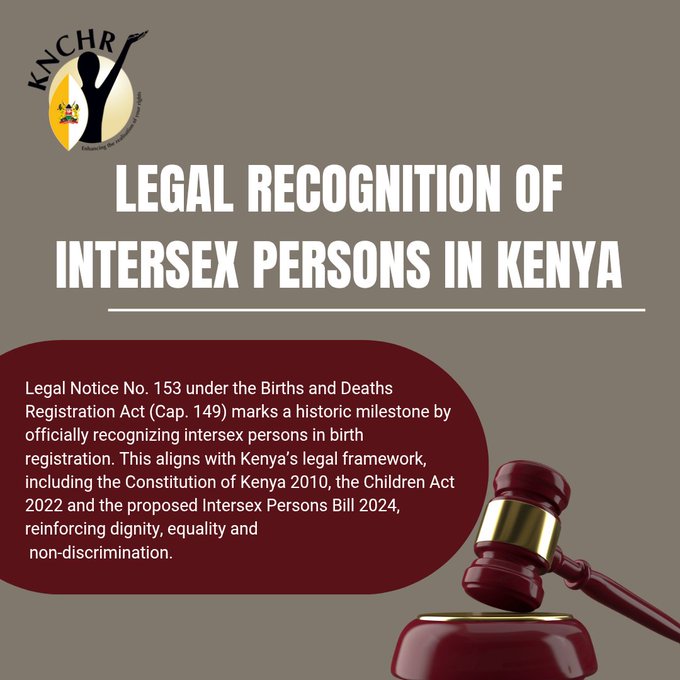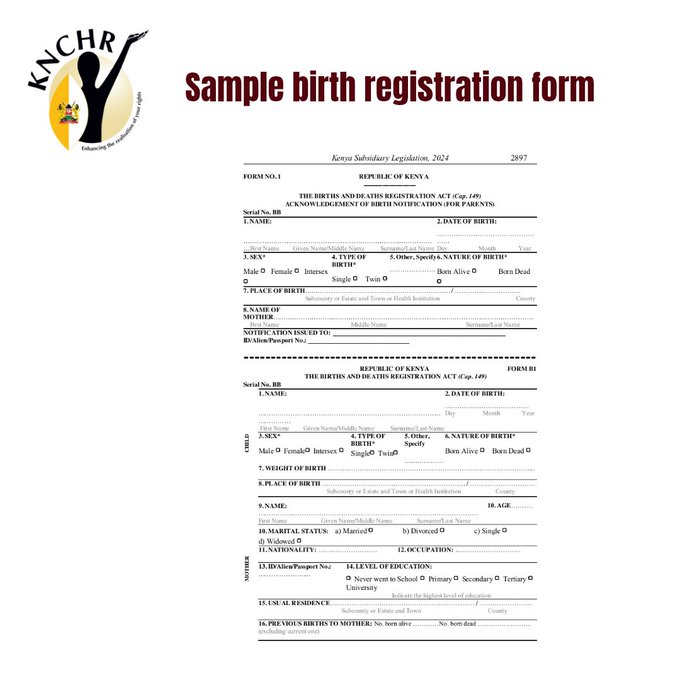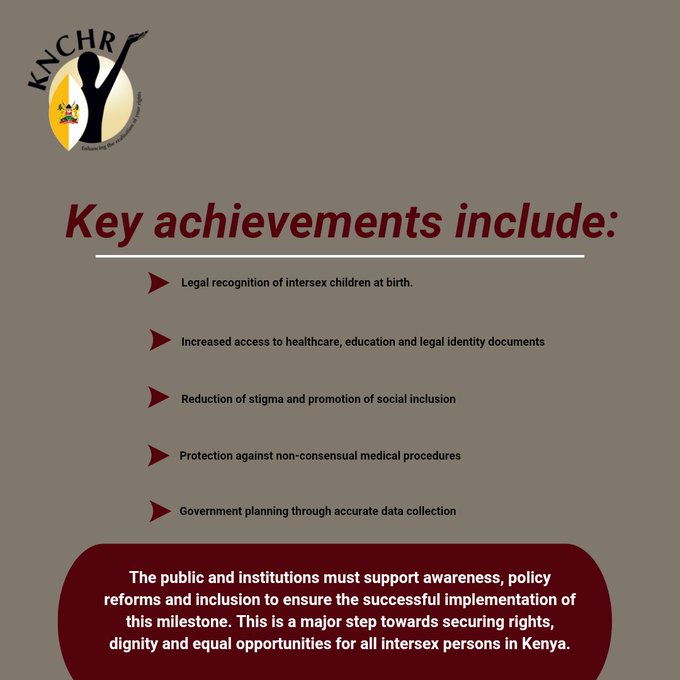NAIROBI, Kenya – In a move for human rights and gender inclusivity, Kenya has officially recognized intersex as a third gender in birth notification certificates.
The change, outlined in Legal Notice 153 of 2025, marks a major policy shift after years of advocacy from campaigners pushing for the recognition of intersex persons.
The revised birth notification certificate sample now includes three gender markers: male, female, and intersex.
This is a significant milestone for intersex Kenyans, who have long faced challenges in acquiring vital documents such as birth certificates, national identity cards, and passports due to the absence of a formal gender category.
Years of Advocacy Culminate in Policy Reform
The journey towards intersex recognition in Kenya gained momentum in 2009 with the case of Baby A, an intersex child whose gender was marked as “?” by a hospital.
Through lawyer John Chigiti, now a High Court judge, Baby A challenged the discrimination intersex individuals face due to the lack of legal recognition.
The case led to a court directive for a national census to determine the intersex population and assess their needs.
While the 2019 Census recorded 1,524 intersex persons—just 0.003% of the country’s population—the Kenya National Commission on Human Rights (KNCHR) estimates the actual number could be as high as 1.4 million.
Kenya’s move to officially recognize Intersex persons at birth is a historic step towards securing the rights and opportunities for all Intersex persons in Kenya. #hakikwawotekilawakati #intersexrights
Many families with intersex children avoid disclosure due to stigma and societal pressure, making accurate data collection difficult.
A government-commissioned report following the court’s directive examined how intersex issues could be integrated into education, medical, and legal frameworks.
The report recommended curriculum reforms in primary, secondary, and tertiary education, covering subjects such as biology, anatomy, life skills, anthropology, criminology, and theology to foster understanding of sex development variations.
One of the key recommendations was the official introduction of the letter ‘I’ as a gender marker alongside ‘M’ and ‘F’ on official documents, a proposal that has now been adopted.
Ensuring Inclusion and Protection
Veronica Maina, chairperson of the KNCHR secretariat leading intersex advocacy, welcomed the government’s recognition of intersex persons, calling it a significant step toward a more inclusive society.
“It is a great stride forward in ensuring that no one is left behind,” she said. “Recognizing intersex persons legally is essential to protecting their rights.”
Meanwhile, KNCHR Commissioner Dennis Wamalwa, an intersex person himself, is spearheading efforts to delink intersex identity from LGBTQ+ classifications.
He argues that intersex persons require distinct recognition, free from the broader debates surrounding sexual orientation and gender identity.
“You don’t choose to be intersex—it is beyond you,” Wamalwa said. “Securing intersex identity as a standalone category ensures children born intersex receive the protection and support they need.”
Wamalwa has been engaging lawmakers to explore legislative instruments that solidify intersex protections and prevent discrimination.
Intersex rights activist Wangui Macharia supports Wamalwa’s initiative, emphasizing that the unique needs of intersex persons require separate legal and social consideration.
“It is important to establish intersex as an independent identity under the law,” Macharia said. “This will ensure intersex individuals receive the necessary protection, rather than being subjected to social stigma and religious debates.”
Kenya’s decision to recognize intersex persons in birth certificates is a major victory for human rights and gender equality.
While challenges remain, activists hope this legal recognition will pave the way for further policy changes to safeguard the dignity and rights of intersex individuals.






